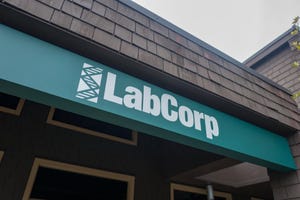Medtech Startup Showdown 2017: Round 2—Admetsys vs NeoLight
Admetsys vs.NeoLight
March 27, 2017
| vs. | ||
|
|
|
|
Describe your device and how it will benefit healthcare. | In the last three decades, diabetes incidence has more than tripled. Meanwhile, techniques for controlling glucose levels in hospitalized patients have remained unchanged, relying on a nurse to a perform a repeating cycle of imprecise, labor-intensive, error-prone tasks. High glucose levels prevent healing, increase complications, and lengthen hospital stays, driving up care costs. Low glucose levels risk seizures, coma, and even death. Precision is necessary for high-quality outcomes. Repeatability at scale is needed for cost control. Admetsys has developed the first artificial pancreas system specifically for the needs of hospital and surgical care. The system attaches to a patient's intravenous line, and automatically measures blood glucose concentration in real time and with no blood loss. From this, it creates an adaptive, computational model of each patient's metabolism, evolving as patient condition does, and delivers precisely-optimized, treatment - insulin to reduce high glycemic levels and glucose to raise and support falling levels. |
| NeoLight's Skylife is a uniquely designed phototherapy device designed to meet the needs of neonatal caregivers in multiple settings. Skylife is intended to treat hyperbilirubinemia, a condition that leads to jaundice in newborns, and can cause brain damage or even death if left untreated. While we consider all its features important, the design particularly emphasizes our commitment to empathy-driven innovation and our technology will enable health care professionals to treat hyperbilirubinemia faster and without any of the side effects caused by existing devices in the market. We have invented a new light-channeling technique, which ensures tunable intensity from 30 to >55 µW/cm2/nm with a uniform light distribution as mandated by the American Association of Pediatrics (AAP). Today, most of the devices use halogen lamps or an array of 200 to 300 LEDs to produce 25 to 30 µW/cm2/nm intensity of light. This generates a large amount of heat, requiring dissipation by massive cooling units on top of the device. Some of this heat is transferred to the infant which frequently leads to dehydration, weight loss and possible erythema. NeoLight's innovative light-channeling technique produces minimal heat, thereby eliminating side effects, and ensuring newborn's safety and comfort. |
How does your product differ from the competition? | Admetsys' system is the first fully- automated glucose control device designed for hospital care; no competitive closed-loop systems presently exist. Moreover, it is the only technology that provides an active safeguard against hypoglycemia in hospital patients. |
| Existing devices offered by the leading competitors in this space, are expensive, large and bulky, cumbersome to use, require longer treatment times, and can sometimes cause adverse side effects. Skylife, on the other hand, is designed with features that render it small, lightweight, and easy to use. In addition, Skylife provides higher intensity light emission that reduces treatment times, has much lower energy needs, negligible side effects, costs less to operate, and supports kangaroo care which allows for continued parent-newborn bonding. |
Do you have customers yet? | Admetsys has conducted three FDA approved clinical trials using fully-engineered prototype devices, demonstrating 97% target glucose control (80-125 mg/dL) and 100% prevention of hypoglycemia (<70 mg/dL). Pivotal trials to support market clearance will begin in 2017. |
| Our device has not yet been cleared for sale by the FDA, but has gone through extensive validations including usability testing in preparation for the FDA submission. After FDA clearance, we plan to pilot the device. |
How much money have you raised? | Admetsys has raised a $1.5M convertible debt round led by Blue Cross & Blue Shield and Baptist Health System to accelerate its production engineering and support its European clinical trials. A subsequent series A raise of $12 million will be required to achieve market clearance both in the Europe and the United States, with commercial launch in select European markets. These objectives would position the company strongly to raise future growth capital, as well as make the company highly attractive to potential acquirers. |
| $2.3 million |
Who are your investors? | Blue Cross & Blue Shield, Baptist Health System, Dreamit Ventures, University of Michigan Zell Early-Stage Fund |
| Neolight has a pool of strategic investors that include hospital groups and individuals such as Steve Case (founder of AOL). |
What is the next milestone for your device? | ISO 13485 and CE certification to support a market launch in the European Union is expected in Q4 2017. |
| The next milestone for Skylife device is FDA approval. |
You May Also Like






